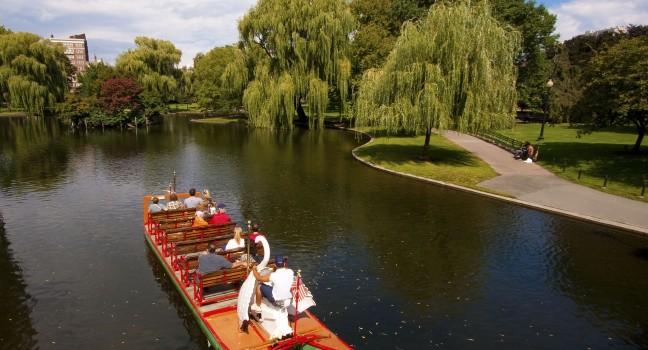Quincy Market, also known as Faneuil Hall Marketplace, is not everyone's cup of tea; some people prefer grit to polish, and disdain the shiny cafés and boutiques. But there's no denying that this pioneer effort at urban recycling set the tone for many similar projects throughout the country, and that it has brought tremendous vitality to a once-tired corner of Boston. Quincy Market attracts huge crowds of tourists and locals throughout the year. In the early ’70s, demolition was a distinct possibility for the decrepit buildings. Fortunately, with the participation of the Boston Redevelopment Authority, architect Benjamin Thompson planned a renovation of Quincy Market, and the Rouse Corporation of Baltimore undertook its restoration, which was completed in 1976. Try to look beyond the shop windows to the grand design of the market buildings themselves; they represent a vision of the market as urban centerpiece, an idea whose time has certainly come again.
The market consists of three block-long annexes: Quincy Market, North Market, and South Market, each 535 feet long and across a plaza from Faneuil Hall. The structures were designed in 1826 by Alexander Parris as part of a public-works project instituted by Boston's second mayor, Josiah Quincy, to alleviate the cramped conditions of Faneuil Hall and clean up the refuse that collected in Town Dock, the pond behind it. The central structure, made of granite, with a Doric colonnade at either end and topped by a classical dome and rotunda, has kept its traditional market-stall layout, but the stalls now purvey international and specialty foods: sushi, frozen yogurt, bagels, calzones, sausage-on-a-stick, Chinese noodles, barbecue, and baklava, plus all the boutique chocolate-chip cookies your heart desires.
In between Quincy Market and South Market colonnades, be sure to stop and take a seat next to the sculpture of legendary Boston Celtics coach, Red Auerbach, smoking one of his famous stogies.
Along the arcades on either side of the Central Market are vendors selling sweatshirts, photographs of Boston, and arts and crafts—some schlocky, some not—alongside a couple of patioed bars and restaurants, including the new Sam Adams Brewery (perfectly poised within sight of his famous statue). The North and South markets house a mixture of chain stores and specialty boutiques.
Faneuil Hall provides a splash of color; during the winter holidays, trees along the cobblestone walks are strung with thousands of sparkling lights and the interior Quincy Market rotunda is home to a 20-foot Christmas tree. In summer up to 50,000 people a day descend on the market; the outdoor cafés are an excellent spot to watch the hordes if you can find a seat. Year-round the pedestrian walkways draw street performers, and rings of strollers form around magicians and musicians.




